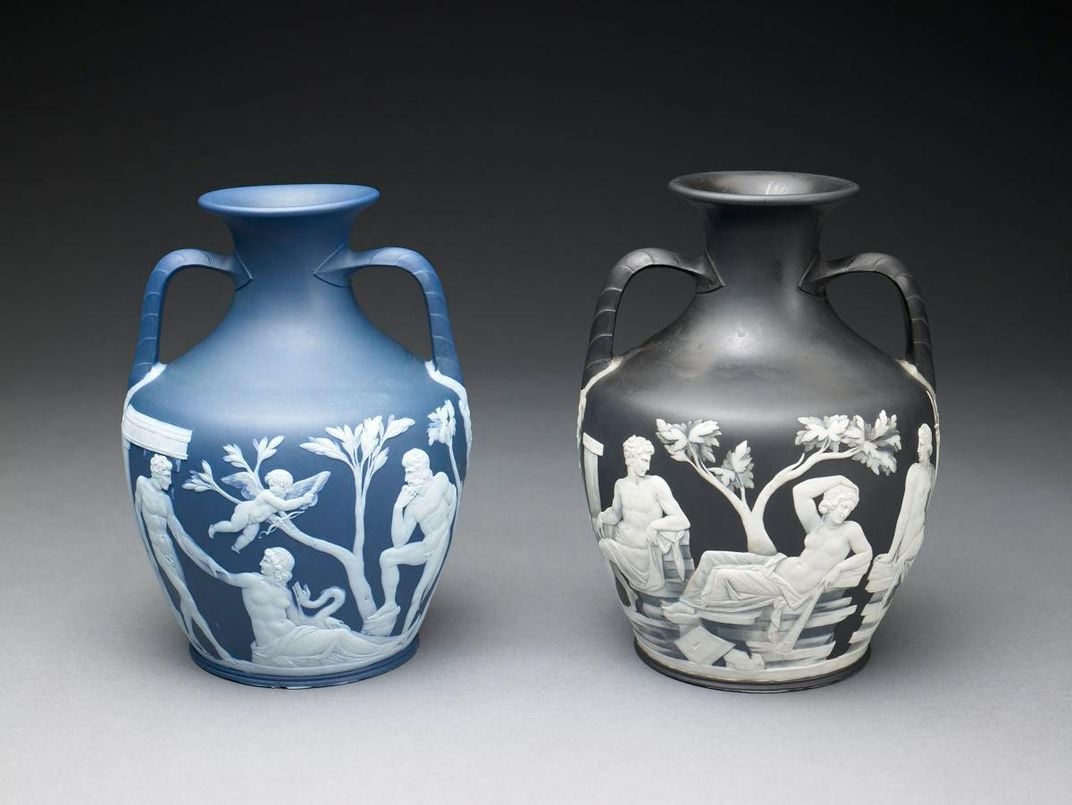This Anti-Slavery Jewelry Shows the Social Concerns (and the Technology) of Its Time
The ‘Wedgwood Slave Medallion’ was the first modern piece of protest jewelry
/https://tf-cmsv2-smithsonianmag-media.s3.amazonaws.com/filer/db/d9/dbd980ca-ff20-4fc3-9a9f-a0f57fb3319d/nmah-84-15393.jpg)
A few years ago, it was those silicone slogan bracelets. Long before that, protest jewelry was a little more artistic–but just as high-tech for its time.
The “Wedgwood Slave Medallion” was created by a man named–you guessed it–Josiah Wedgwood. He’s remembered as giving a name to an easily recognizable style of pottery. As well as being a ceramics innovator, Wedgwood was an abolitionist who opposed slavery and used his business skills to create an icon of that movement.
“This medallion, first made in 1787, became a popular icon in the British movement for the abolition of the slave trade in the late 18th and early 19th centuries,” writes the Smithsonian National Museum of American History, which has one of the medallions in its collection. It shows a kneeling slave in chains above which the words “AM I NOT A MAN AND A BROTHER” appear.
The medal was created the same year that the Society for the Abolition of the Slave Trade, an influential part of the British anti-slavery movement, was formed, writes The Wedgwood Museum. Wedgwood was one of its founding members and his medallion became a key symbol of that movement.
“The slave medallions were worn in hatpins, brooches and necklaces and were also inset in other items, such as snuff boxes,” the museum writes. “They were one of the earliest examples of a fashion item that was used to support a cause.”
The enslaved man’s plea–”Am I not a man and a brother?” became the society’s rallying cry, writes the BBC. Thomas Clarkson, another anti-slavery campaigner, recalled that “At length, the taste for wearing them became general,” spreading–he believed–the campaign’s message.
The medallion’s image was copied from an image the Society had already created, writes the BBC. It represents a departure from the neoclassical blue-and-white or black-and-white pottery Wedgwood is most commonly remembered for, but it was made using the same high-tech methods.
Wedgwood created a unique style of matte pottery that frequently came in a pastel blue color he also pioneered, using a mineral oxide stain, Rachel Crow writes for Period Living. At that time, it was common for wealthy people to travel through Greece and Rome and come back with ‘artifacts’ allegedly from the classical period (many were, many were not), and there was a general fascination with the Classical period. Wedgwood jumped on this trend.

Iconic in style, his pottery was also ahead of its time in consistency. Wedgwood developed techniques for measuring kiln heat and firing pottery that allowed for mass production, meaning that his pottery was the ‘it’ item for Brits.
Those techniques also allowed Wedgwood to make so many replicas of the medal, and the popularity of Wedgwood’s neoclassical styling helps to explain why the protest jewelry became so popular—although how much it actually did to abolish slavery is up for debate.
In the end, though, writes NMAH, the jewelry, along with antislavery pamphlets and petitions, allowed British abolitionists to be “astonishingly successful in achieving their aims.” Their strategies helped to create the modern strategies people use to spread the word about important causes–and the slogan bracelets, t-shirts and other artifacts sold by social campaigners today “are the descendents of the Wedgwood medallion,” the museum writes.